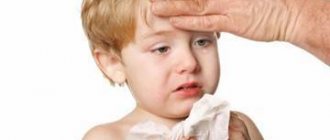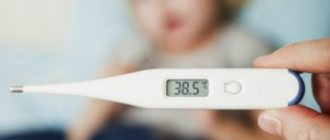What does a pediatric orthopedist treat?
Pediatric orthopedics covers a huge number of diseases. The most common pathologies are the hip and ankle joints, foot and back, as well as the consequences of lesions of the spinal cord and brain.
Most of the diseases of the musculoskeletal system are:
- Cerebral palsy.
- Perinatal encephalopathy.
- Various birth injuries.
- Torticollis.
- Flat feet.
- Hypotonicity and hypertonicity.
- Clubfoot.
- Dysplasia, subluxation and dislocation of the hip joint.
- Incorrect posture.
- Injuries of the musculoskeletal system..
- Limb deformity.
- Delay in motor development.
Pediatric orthopedist
A pediatric orthopedist works in close collaboration with pediatricians, neurologists, geneticists, endocrinologists, radiologists, and surgeons.
This specialist’s competence includes traumatology and orthopedics, that is, congenital and acquired types of injuries and pathologies of the musculoskeletal system: bones, joints, periarticular soft tissues, ligaments, muscles.
Appointment
with a pediatric orthopedist The most common reasons for visiting a pediatric orthopedist: dysplasia, scoliosis, trauma and neoplasms of the musculoskeletal system.
Routine preventive examinations of the child by a pediatric orthopedist are carried out at the ages of 3 months, 7, 10, 15, 16 and 17 years.
Diseases
- congenital and acquired anomalies and defects of the musculoskeletal system: scoliosis, clubfoot, hallux valgus, flat feet, connective tissue dysplasia, subluxations and dislocations of the hip joint, patella and knee joint, torticollis
- cerebral palsy
- bone fractures
- ligament and muscle ruptures
- meniscal injuries
- pathologies of periarticular soft tissues
- bruises and abrasions
- wounds and wound infection
- osteoporosis
- bone, joint and muscle infections: osteomyelitis, septic arthritis, pyomyositis
- genetically determined pathologies of the musculoskeletal system: osteogenesis imperfecta, Duchenne muscular dystrophy
- neoplasms of bones, muscles and peripheral nerves
Symptoms
- pain in bones, joints, muscles
- fever
- limited mobility, stiffness, swelling in the joint/bone area
- change (deformation) in the shape of bones or joints
- violation of the integrity of the skin at the site of injury
- short stature that does not correspond to age standards
- weakened reflexes; turning the head to one side, to the side; motor delay
- retardation in physical development
- muscle tone
- complaints of pain, fatigue when walking
- disturbances in vision, hearing, sleep, speech, food aspiration, GERD
- increased bone fragility
- developmental disorder of dental dentine
- weakness of the musculo-ligamentous apparatus
- uncontrolled movements, imbalance
It is necessary to contact a pediatric orthopedist for routine preventive examinations of the child, in order to timely detect delays in growth and development.
In case of bone fractures, muscle and ligament ruptures, other injuries and infection.
For diagnosis, monitoring, treatment and supportive therapy of congenital and acquired diseases of the musculoskeletal system.
If an unusual neoplasm of bones, muscles, or muscle tissue is detected.
An appointment with a pediatric orthopedist at the Rassvet clinic consists of several stages:
Consultation with a pediatric orthopedist
A consultation with a pediatric orthopedist is carried out to collect anamnesis, information about the child’s developmental characteristics and to identify disturbing symptoms as signs of a musculoskeletal disease.
The doctor will ask questions about the child’s general health, chronic diseases, and how the mother’s pregnancy proceeded and how the birth went. To eliminate the risk of pathology associated with heredity, the orthopedist will ask you to tell about the diseases of close relatives. In case of injury, the child will receive immediate assistance.
During the consultation, you will receive all the information about diagnostic measures, effective treatment regimens, rehabilitation, and learn the estimated prognosis. If necessary, doctors of other specialties will be involved.
Diagnosis of musculoskeletal diseases in children
Diagnosis begins with a physical examination. The doctor assesses motor functions, the development of the musculoskeletal system, the condition of the skin, identifies changes in joints and bones, and measures the child’s growth.
In case of injuries, ruptures of muscles, ligaments and bone fractures in children, or detection of unusual formations, instrumental studies are carried out: radiography, MRI, CT, PET, ultrasound. They help determine the degree of damage, structural changes in the musculoskeletal system, and the characteristics of the tumor. If necessary, a biopsy is performed.
Laboratory tests are prescribed to identify the causative agent of infection associated with the injury, determine an antibiotic treatment regimen, and decide on the need for surgery.
Diagnosis of osteogenesis imperfecta in children, in addition to considering family history, includes blood and urine tests, DNA testing, ultrasound and x-rays.
To determine the type of scoliosis in a child (if it is identified during examination), an x-ray is performed. If a neurological pathology is suspected, an MRI examination of the spinal cord is performed.
Treatment by a pediatric orthopedist
Treatment of diseases and conditions of the musculoskeletal system in children is aimed at relieving pain, eliminating infection, restoring motor function, and rehabilitation after injury.
Depending on the established diagnosis, the doctor prescribes painkillers, antibiotics, performs immobilization (applies fixing bandages, splints, splints), decides on surgical treatment, develops a rehabilitation program, gives recommendations on physical activity, wearing orthopedic shoes, insoles, orthoses.
At the Rassvet clinic, preoperative examination and management of children after surgical treatment are carried out; operations are carried out at our partners - in specialized centers of traumatology and orthopedics.
We perform diagnostic and therapeutic punctures of joints and operations on soft tissues.
Emergency prevention of tetanus in children with injuries with skin breakdown, burns, animal bites, long-term abscesses is carried out directly in our clinic.
What will you get from a pediatric orthopedist at the Rassvet Clinic?
Children's orthopedists at Dawn will conduct all the necessary routine preventive examinations of the child and prescribe effective treatment for diseases of the musculoskeletal system, based on the principles of evidence-based medicine. They will provide all the necessary assistance for injuries, burns, and fractures.
Our clinic uses a multidisciplinary approach with the involvement of doctors of the required profile, as well as the most modern diagnostic and treatment equipment. This allows timely detection of anomalies of the musculoskeletal system, selection of optimal treatment tactics and prevention of disease complications.
When do you need help from a pediatric orthopedist?
Timely diagnosis of the disease allows you to prevent its development. Therefore, it is important to know in what cases a child needs to be examined by an orthopedic surgeon.
Reasons for examination:
- obvious asymmetry of the baby’s skin folds;
- different leg lengths;
- the baby turns and tilts his head only in one direction;
- in the “standing” position, the baby rests on the inner or outer surfaces of the foot;
- slow development of the child;
- the child cannot walk independently after one year;
- joint pain during active movements, walking or running;
- curvature of limbs;
- disorders in the development of fine motor skills;
- hand spasms when writing;
- the child often gets tired when walking;
- The baby is clubbing.
You should also consult a doctor if you have the following pathologies and manifestations:
- fractures, bruises and dislocations;
- with regular pain in the spine area;
- frostbite;
- crunching when bending limbs;
- swelling in the joint area;
- muscle pain when changing atmospheric pressure.
Routine examination of an orthopedist in children
A routine examination by an orthopedic surgeon is carried out at 3 months, 3 years, 5 and 7 years.
At 3 months , a specialist checks the position of the head and its tilt. Next, he proceeds to examining the chest - identifying curvatures, if any. Then - the hip joints. Here the orthopedist checks for the absence of muscle spasms, asymmetry of the folds, and improper inclination of the feet.
At 3-4 years old, the doctor checks the condition of the musculoskeletal system after visiting kindergarten. At this age, the child exhibits chest deformities. If the curvature is not severe, the pathology can be easily cured by an orthopedist. In more advanced cases, you will have to seek help from a thoracic surgeon.
At 5-6 years old, special attention is paid to the child’s spine. Detected curvatures of the spinal column are much easier to correct at this age. Also, in six-year-olds, the feet are already fully formed, so we can say more confidently about the presence or absence of flat feet. At the same age, you will need to consult a doctor if you plan to enroll your child in sports sections.
At 6-7 years old , before going to school, a visit to the doctor is necessary, since at this time the child is actively growing. Accordingly, problems with posture may appear. Causes for curvature of the spine can be:
- low physical activity;
- excess weight;
- incorrect position at the desk;
- pathology of the hip joint.
Correctly developed posture looks like this:
- Raised chin.
- Rolled shoulders.
- Straight back.
- Shoulders, shoulder blades, pelvic bones, lobes and nipples are at the same level.
- The buttock and knee folds are symmetrical.
To correct posture, it is recommended to monitor the correct “sitting” position, add physical activity to your regimen, wear orthopedic shoes and backpacks with orthopedic inserts.
Services of a pediatric orthopedic surgeon
In our clinic, a good pediatric orthopedist provides consultations to babies from the first month of life. A visit to a doctor is necessary to diagnose possible congenital anomalies of the musculoskeletal system at a very early age:
- hip dysplasia,
- clubfoot,
- torticollis,
- chest deformation.
The sooner the pathology is identified, the more successful the treatment will be. Before the first year of life, a pediatric orthopedist examines the child at 1 month, 3 months, six months and a year. In the future, a preventive examination is carried out once a year. Flat feet and poor posture in children are also common reasons for visiting a pediatric traumatologist-orthopedist.
Poor posture and gait, muscle imbalance, pain in the legs and back in children are alarming symptoms that may indicate the development of flat feet in the child. In preschool age, the foot is in a stage of intensive development; its formation is not yet complete, so any unfavorable external influences can lead to the occurrence of certain functional deviations. Unfortunately, parents may not be aware of the initial deformation of the feet, so a visit to the doctor will provide accurate information about the condition of the child’s feet and spine.
An orthopedic traumatologist will conduct a thorough examination of the child; our clinic also uses computer plantoscopy and posture examination using a diagnostic laser for diagnosis.
Parents should keep in mind that without timely treatment, such disorders can lead to serious complications and cause not only diseases of the musculoskeletal system, but also disorders in other body systems. Deformations of the spine and chest lead to shallower breathing, as a result of which the body receives an insufficient amount of oxygen, metabolism decreases, and heart function is disrupted. Deformations in the lumbar spine often lead to disruption of the gastrointestinal tract, etc.
Therefore, regardless of age, if you notice a change in your child’s posture, gait, or pain in the legs, you should immediately contact a pediatric orthopedist.
How is a doctor examined?
In order to make a correct diagnosis and prescribe treatment, the orthopedist must conduct a thorough examination of the patient. The doctor’s actions during the examination are as follows:
- First of all, the orthopedist visually examines the child.
- Then it collects information on diseases of the baby’s close relatives, as well as information about how the mother’s pregnancy proceeded.
- Next, the doctor determines the pathology of the musculoskeletal system and the degree of its development.
- If necessary, prescribe additional examination and therapy.
The main stages of a child’s motor development
In order to promptly suspect pathology, parents must know how the musculoskeletal system should develop in children:
- At four months, the baby should already be able to roll over from back to stomach and back, raise his head high and maintain its position.
- At five months, the child should be able to stand firmly on his feet when held by the armpits and confidently hold objects in his hands.
- At six months, the baby’s back becomes stronger. At this time, many children can already sit and get on all fours on their own.
- At seven months, the child is able to rise to his feet, holding onto a support.
- At eight months - crawls and sits up without adult help.
- At nine he walks confidently, holding onto support.
- At eleven months the child can already stand without support.
- By one to one and a half years, the baby should already be able to walk well without adult support.
Remember! Any significant deviation from the schedule is a reason to contact a pediatric orthopedist!
Children's orthopedists in Moscow
Who is a pediatric orthopedist-traumatologist?
A pediatric orthopedic traumatologist is a doctor who will help relieve children of many problems with the musculoskeletal system, including the consequences of injuries. He will prescribe a set of measures to treat spinal curvature, to shape posture, gait, and so on. By contacting a pediatric orthopedist on time, you, with the help of physical therapy, manual therapy, and orthopedic shoes, will be able to solve those problems that in advanced stages will require surgical intervention.
What do pediatric orthopedists treat?
Consultation with a pediatric orthopedist is extremely important in the first year of a baby’s life. Do not think that injury in children is the result of a fall, blow or other mechanical damage. Dislocations of limbs in babies can occur even in an uncomfortable position, which the mother will not even notice. In this case, only an examination by a pediatric traumatologist will save the situation and identify the cause of the baby’s restless behavior.
Doctors in this category also diagnose congenital diseases that are invisible to the naked eye. A consultation with a pediatric orthopedist-traumatologist in Moscow will help identify diseases such as:
- hip dislocation and other birth injuries;
- congenital clubfoot and torticollis;
- rickets and cerebral palsy;
- perinatal encephalopathy;
- paresis and paralysis;
- scoliosis;
- flat feet and other diseases.
Pediatric orthopedists examine the hip joints, back, legs and arms, hips, spine, knee and other joints, legs, and ligaments. If the pediatrician refers your baby for examination to a pediatric traumatologist, and he does not detect the problem visually or by palpation, the child will be prescribed a set of diagnostic measures. Sometimes additional diagnostics are required to confirm a preliminary diagnosis in children and adolescents. In addition to general clinical tests, a pediatric orthopedist may prescribe special hardware tests:
- CT;
- Ultrasound;
- radiography;
- MRI;
- arthrography;
- nuclear magnetic resonance imaging;
- oscillography and other examinations.
In what cases should you contact a pediatric orthopedist?
There are wonderful pediatric doctors in Moscow who will see your babies and conduct high-quality diagnostics. Among the reasons why you should definitely contact a specialist are:
- a child’s growth and development lagging behind his peers;
- poor independent movement over the age of one year;
- complaints of pain in the foot, lower leg, thigh, spine, and so on, arising when moving;
- rapid fatigue;
- noticeable curvature of the legs and arms;
- problems with fine motor skills of the hands, poor writing with the dominant hand, spasms when writing;
- headaches during exercise;
- congenital clubfoot, when the cast is not removed for too long;
- suspicions of abnormal development of the baby’s skeleton.
Once again contacting a specialist in Moscow will not hurt anyone and certainly will not cause harm. Even if they tell you that it is impossible to cure cerebral palsy, and the tone and PEP will go away without the intervention of an orthopedist, do not listen. Timely treatment will bring much more benefit and relieve many symptoms.
Where do you get the qualification of a pediatric orthopedist?
Consultation with an orthopedist-traumatologist is carried out by a doctor who has received the appropriate qualifications. You can gain experience and gain special knowledge by graduating from the departments of traumatology and orthopedics:
- RUDN;
- RNIMU named after. N. I. Pirogova;
- Moscow Medical Academy named after. I. M. Sechenov;
- Moscow State Medical and Dental University;
- Institute of Traumatology and Orthopedics named after. N. N. Priorova;
- MONIKI;
- FPPOV First Moscow State Medical University named after. I. M. Sechenov;
- Institute GUN TsNIITO im. N.N. Priorov and other universities in Moscow.
Famous pediatric orthopedists and traumatologists of Moscow
The development of pediatric orthopedic care in Europe began in the late 18th and early 19th centuries. In Russia, training in bone-setting began with the opening of a medical-surgical school by order of Peter I in 1707. G.I. Turner is considered the founder of the Russian orthopedic school. Russia and Moscow owe a lot in this matter to such famous and legendary doctors as Shaposhnikov, Nasyrov, Sklifosovsky, Ilizarov, Botkim and others.










